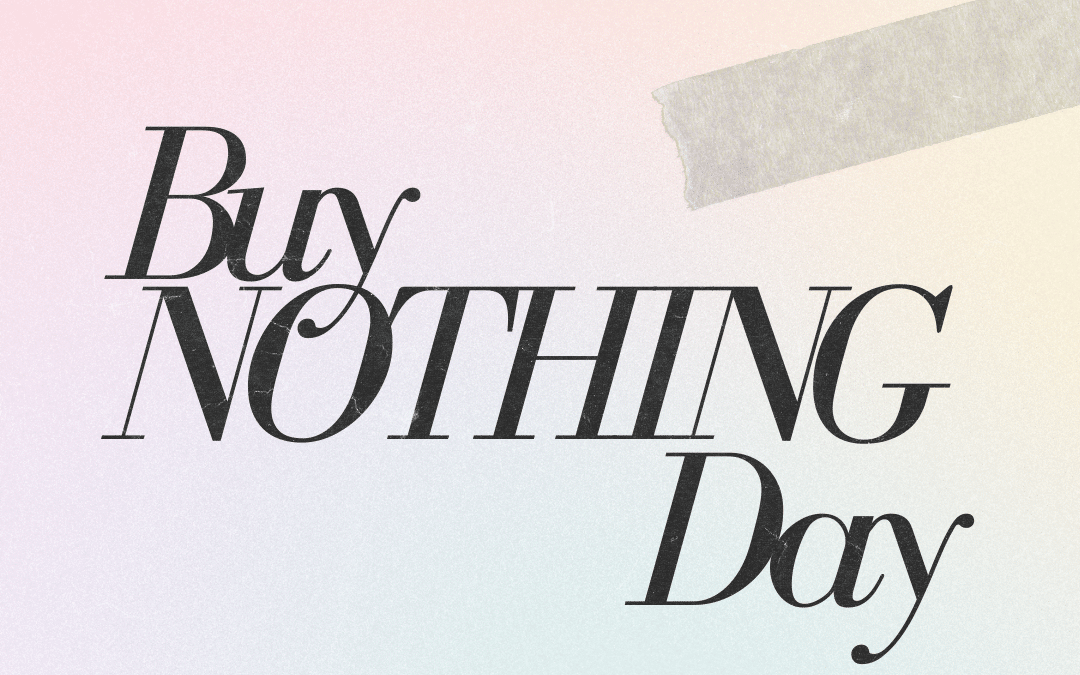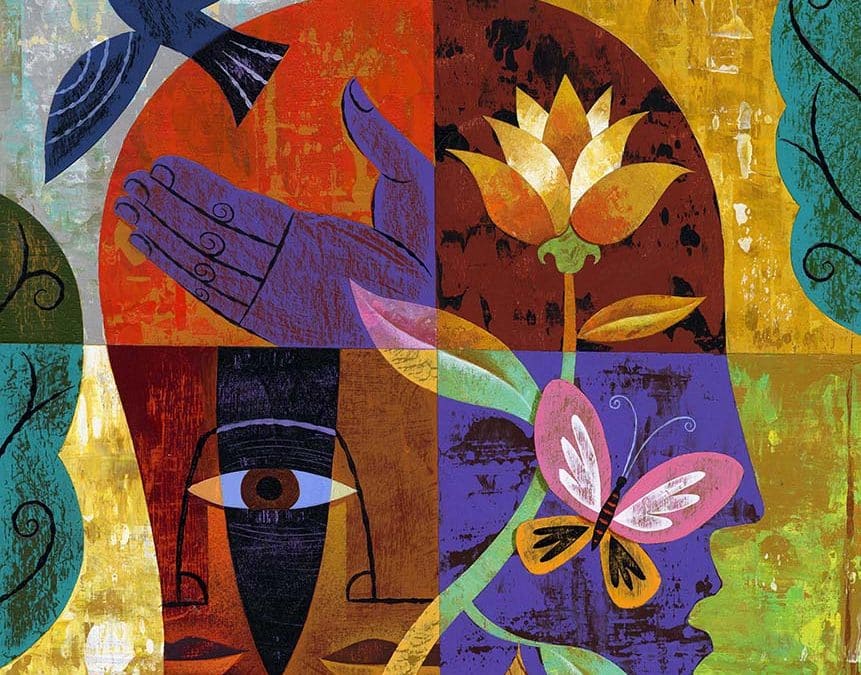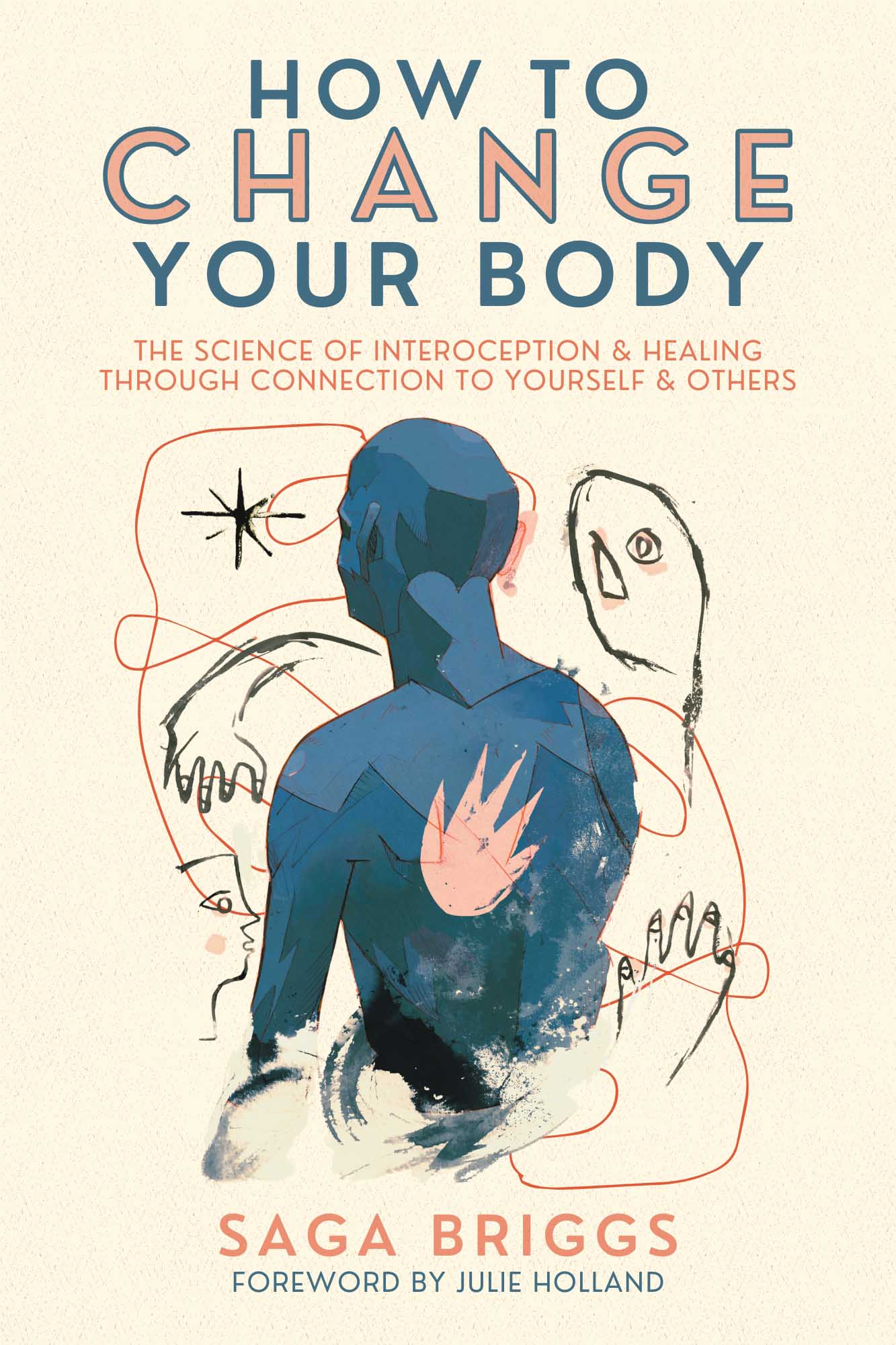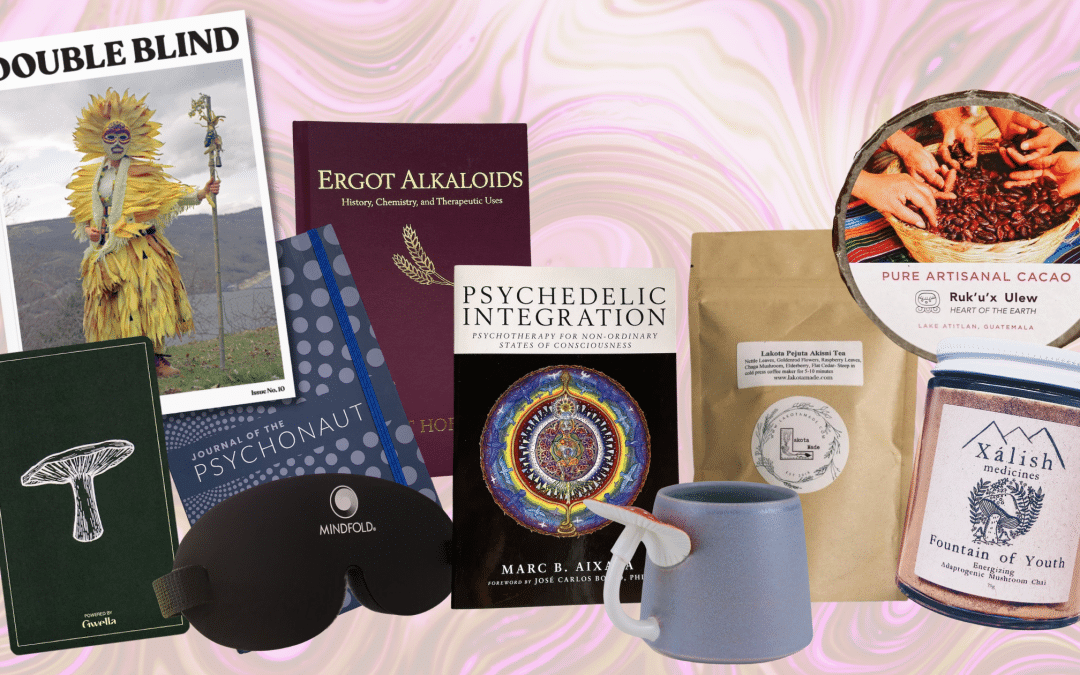
Psychedelic Stocking Fillers: A Gift Guide for Your Psychonaut Friend
Embrace the art of conscious gifting as we delve into a curated selection designed for the discerning psychedelic explorer. This gift guide unveils 10 thoughtfully chosen products that spark conversations and foster intentionality within the realm of psychedelic healing and exploration. From profound literature on psychedelic integration and visionary ceramics to ceremonial cacao and herbal elixirs, each gift is a portal to a realm where exploration and self-discovery intertwine. By supporting indie books and small businesses, you not only gift unique and meaningful experiences but also contribute to the flourishing of independent creators and the vibrant tapestry of the psychedelic community.
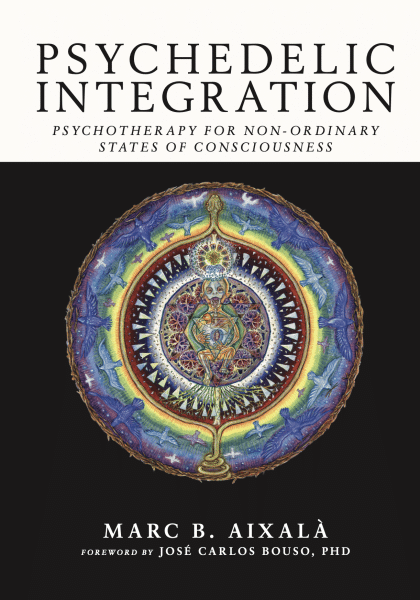 1. Psychedelic Integration: Psychotherapy for Non-Ordinary States of Consciousness by Marc B. Aixalà, $26.95
1. Psychedelic Integration: Psychotherapy for Non-Ordinary States of Consciousness by Marc B. Aixalà, $26.95
Accessible to psychedelic-assisted therapists and practitioners, as well as those simply seeking to learn more about psychedelic integration to process their own journeys, “Psychedelic Integration” is one of the most comprehensive books on the subject to date. Written by psychotherapist and long-time breathwork practitioner, Marc B. Aixalà, this book traces the history and evolution of psychedelic-assisted therapy and integration research from the 1960s to the present moment, detailing therapeutic techniques and real-world observations on the deep work of healing. Ideal for giving to a friend who is beginning their healing journey, this insightful guide offers a compassionate and informed exploration of the profound impact psychedelic experiences can have on personal growth and well-being.
 2. Journal of the Psychonaut by MAPS, $12.95
2. Journal of the Psychonaut by MAPS, $12.95
This journal is an invitation to explore your inner universe. Psychedelic experiences have the potential to dramatically change us for the better, but only if we truly integrate what we’ve learned from them into our everyday lives. This journal serves as your sacred space to prepare for and then integrate these lessons from your explorations of non-ordinary states of consciousness. Perfect for those looking to unpack and process their inner contents, it is an invaluable tool for integrating experiences. We encourage you to color outside the lines, break the rules, and, above all else, work with this journal in the way that fits you best. Use the blank pages to Set the Setting and prepare for Before, During, and After your experience.
 3. Ergot Alkaloids: History, Chemistry, and Therapeutic Uses by Albert Hofmann, $35
3. Ergot Alkaloids: History, Chemistry, and Therapeutic Uses by Albert Hofmann, $35
A true collectors item, any psychonaut would want this beautiful gold-embossed, hardcover classic on their shelves. This book is a detailed account of chemical compounds and pharmacological investigation into the potential of visionary plants. Starting with the botany and cultivation of the ergot mushroom, Hofmann takes us through the historical elaboration of the fungus including the poisoning epidemic of ergot and its early medical uses to the use of psilocybin as a “magical drug”. With a detailed timeline, we explore the growth of the pharmaceutical-chemical investigation from 1816 to 1961 with a total synthesis of ergotamine including tables of chemical structures and the role of lysergic acid, d-lysergic acid and lysergic acid diethylamide in experimental psychiatry gaining increasing importance in psychotherapy as a medical aid.
 4. A Subscription to DoubleBlind Magazine, $12.99
4. A Subscription to DoubleBlind Magazine, $12.99
DoubleBlind is a biannual print magazine and media company covering timely, untold stories about the expansion of psychedelics around the globe. Subscribing to DoubleBlind includes a copy of their latest issue, renewing again before their next issue as well as a free 1-month DoubleBlind membership trial which includes monthly virtual consciousness-shifting journeys such as cannabis ceremonies, breathwork, and integration circles, access to all past and future DoubleBlind workshops/webinars, discounts on courses, and access to their private online community forum.
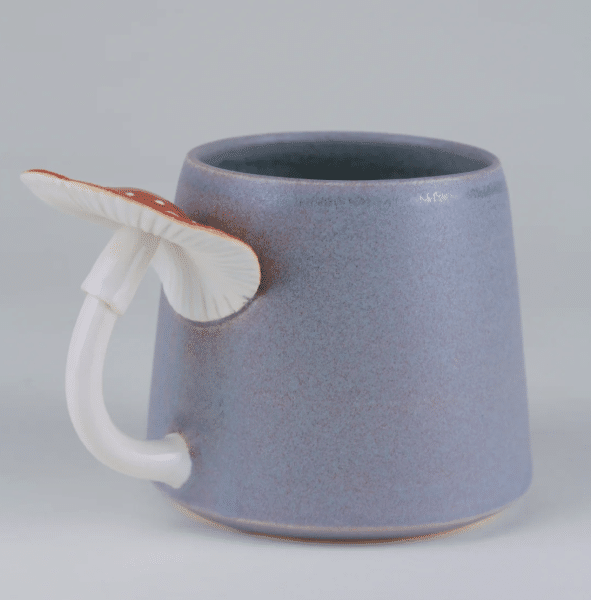 5. Waverly Long Studios Ceramics Mushroom Mug, $120
5. Waverly Long Studios Ceramics Mushroom Mug, $120
Based in North Carolina, Waverly Long Studios creates beautiful nature-inspired ceramics, including everything from mugs to planters to earrings. Their products are small-batch and quick-selling, so don’t hesitate to snag yourself a piece! Their mugs, in particular, stand out as unique and visually stunning creations, making them the perfect gift for fungi lovers who appreciate the intricate beauty of nature captured in each exquisite piece.
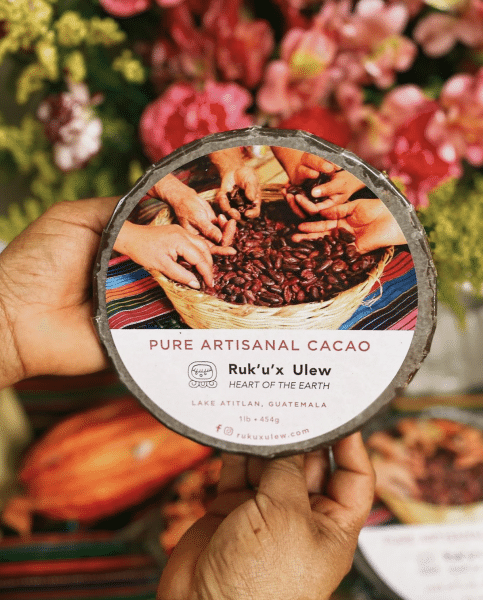 6. Ruk’u’x’Ulew Cacao, $40-50
6. Ruk’u’x’Ulew Cacao, $40-50
Ruk’u’x Ulew [Roo-Koosh-Ouh-Leh-Ou] is a 100% Mayan-owned, all-Indigenous women’s collective that produces artisanal Guatemalan growth ceremonial cacao. Ruk’u’x Ulew translates as ‘Heart of The Earth’ which honors founder, Cecilia Mendoza Chiyal’s, Mayan culture and ancestry but also relays her belief that cacao is a divine representation of the ‘Heart of The Earth.’ This healing and heart-opening ceremonial cacao, crafted with intention, is meant to be savored alone or shared, creating moments of connection and profound introspection.
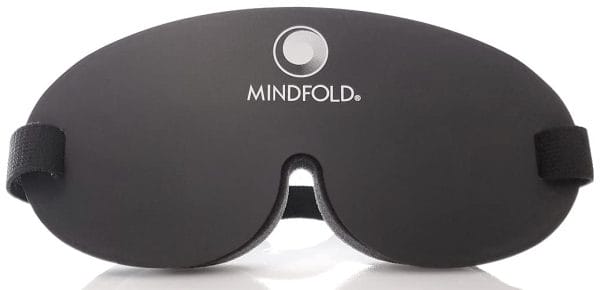 7. Mindfold Eye Mask, $19.95
7. Mindfold Eye Mask, $19.95
The Mindfold mask was created in 1978 by artist and visionary, Alex Grey, to help you with your inner meditation journey by blocking out all light with your eyes open. Over the years the myriad of uses has gone far beyond meditation, sleep, relaxation, and travel. Ideal for your psychonaut friend, this mask is a versatile tool that can enhance their explorations into consciousness, providing a unique and immersive experience during their inner journeys.
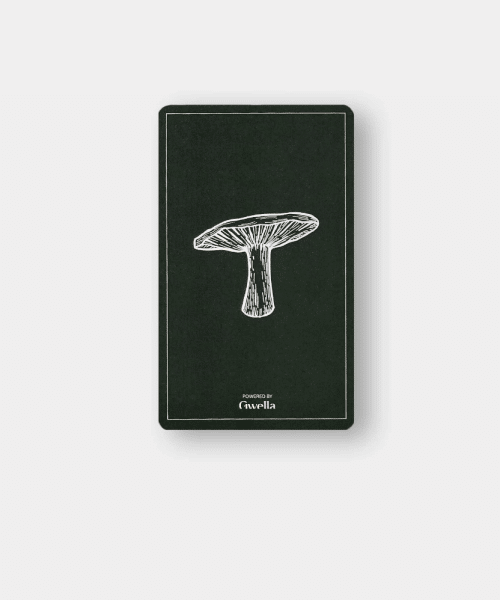 8. Psychedelic Journey Intention Cards by Gwella, $12.99
8. Psychedelic Journey Intention Cards by Gwella, $12.99
Intention setting is an ancient practice that opens us up to new interpretations of our circumstances and our agency within them. Setting intentions helps us clarify what’s most important, and allows us to focus on who we want to be. This pack of 24 cards consists of prompts and reflections designed to guide conscious self-discovery and self-awareness. They can be used in individual or group settings, and are great for perhaps gifting to the psychedelic explorer in your life.
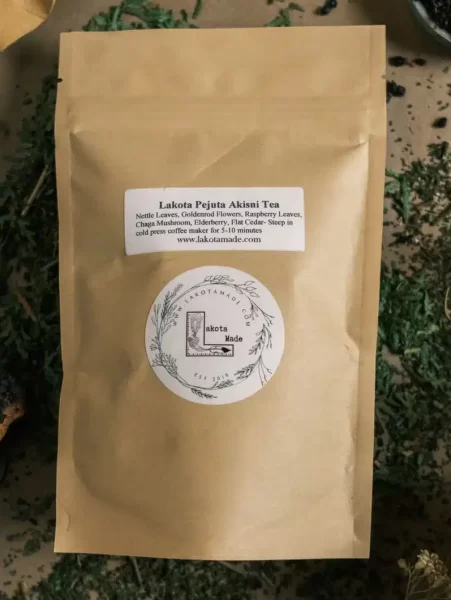 9. Pejuta Akišni Healing Medicine Tea by Lakota Made, $30
9. Pejuta Akišni Healing Medicine Tea by Lakota Made, $30
Pejuta Akišni (pay-jhoo-tah ah-kee-shnee) means Healing Medicine in the Lakota Language, and the tea includes nettle, goldenrod, elderberry, raspberry leaf, flat cedar, chaga mushroom. Uses: Steep 2-3 tablespoons for 5-7 minutes in your preferred method of brewing tea, enjoy hot or cold, add some local honey and game on. Lakota Made LLC, owned and founded by Megan L. Schnitker, from Milks Camp, South Dakota, is a company that specializes in small batch Indigenous First medicines and eco-friendly personal care products that use locally sourced and sustainably harvested ingredients.In the winter months, a healing medicine tea like Pejuta Akišni becomes a comforting and soul-nourishing companion, offering warmth and holistic wellness to navigate the colder seasons with intention and self-care.
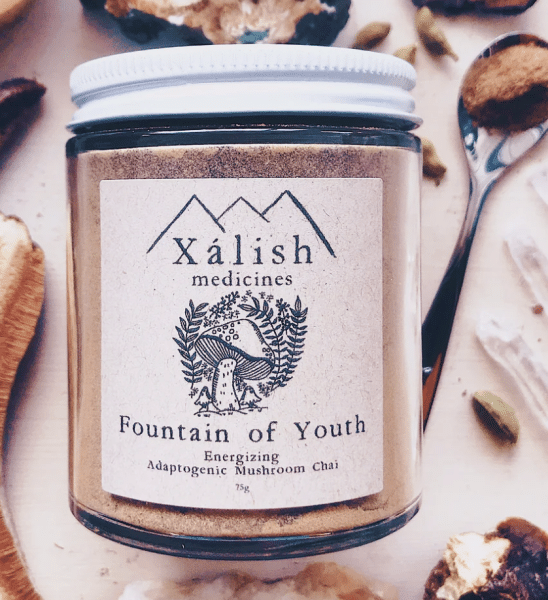 10. Adaptogenic Medicinal Mushroom Chai Elixir by Xálish Medicines, $34.50 CAD
10. Adaptogenic Medicinal Mushroom Chai Elixir by Xálish Medicines, $34.50 CAD
The Fountain of Youth Adaptogenic Mushroom Chai stands as a potent elixir crafted from a harmonious blend of roots, spices, and medicinal mushrooms. Beyond its exquisite taste, this chai serves as a nourishing and energizing elixir with properties that support both physical and mental well-being. Ideal for individuals grappling with the strains of modern life, it provides a holistic approach to combating stressors that may affect the body, mind, and spirit. Xálish Medicines intricately weaves the spirit of plant medicine and ancestral reverence into each offering, aiming to reestablish a harmonious connection with our plant kin, ourselves, our environment, and the entirety of creation. It can serve as an excellent companion after challenging experiences, fostering shared moments of connection and boosting both mood and spirit.
